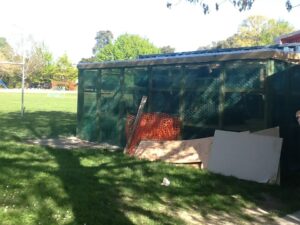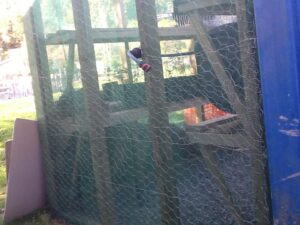Our Propagation shed
Why we’re making the shed
Wakefield School watched the RNZ Fight for the Wild series and were inspired by the goal of New Zealand being predator free by 2050. That led us to making bird cafes and lizard lounges which gave us the idea to make a propagation shed so we could grow the trees we need for our bird cafe. This will encourage the native birds to feed on our trees and will also encourage the lizards to come to our school to feel safe in our environment.

The completed propagation shed ready to nurture native seedlings.
How we built it
First, we needed to draw a picture of the shed so we had to go visit Julie’s shed on her property to look at her shed. This helped us to get a good idea of what our design would look like. When we got back, Mr Mack had to get materials from Bunnings so that we could build our shed.
To build the shed we had to use the drill, hammers, and a skill saw to cut the timber. Lots of children helped to build the propagation shed. We put up netting around the outside to let the light in and spread gravel on the bottom so it could catch all the dropped potting mix.
Why the propagation shed is important
The propagation shed is important because we need it to help grow the baby plants to plant in our bird cafe. Baby plants are important to help the planet to survive. If there were no trees, then we won’t get enough oxygen. The school needs a propagation shed so we can grow plants to help the environment and our school.

The watering system in place.
Why we need the plants to be healthy
If the plants aren’t healthy then they will all die so you can take part and help our school.
Thanks
We would like to thank everybody that has been involved in the building and organising of our propagation shed. We could not have done this without your support and now we can grow our own seedlings for many years to come. Thank you to Enviroschools, 1 Billion Trees and Tasman District Council for the grant that funded this project.
Written by Liam O and Oscar M.